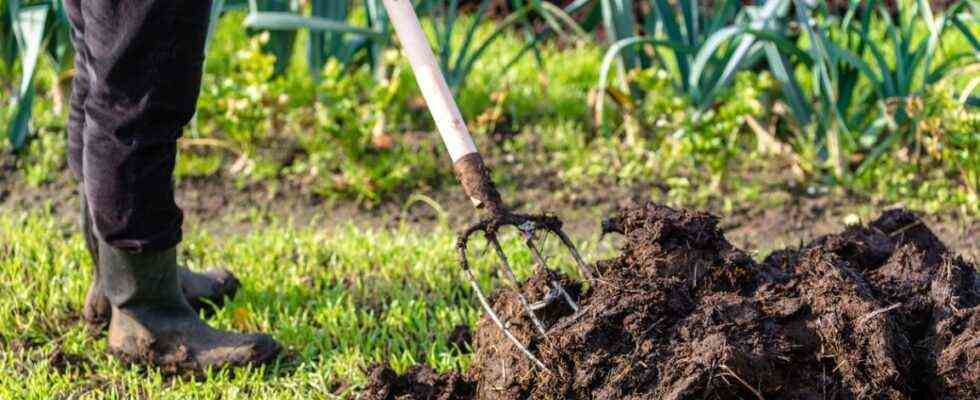The different types of manure
Manure is made up of both animal waste and plant matter. It can be straw or garbage. It therefore comprises a mixture of dry matter and wet matter. Obviously, manures are different depending on the animals that are at the origin. Each has its characteristics. Certainly, manure enriches the soil and is good for its balance, nevertheless, it is recommended to make sure of the origin of the one you choose and to prefer one from traditional breeding.
- The sheep manure is rich in potash.
- The chicken manure tends to be very high in nitrogen.
- The horse manure, meanwhile, is well balanced. Certainly it heats more, but for less time than the manure coming from a horned animal.
- The sheep manure and of goats will lighten an earth that tends to be heavy.
- The cattle manureconversely, improves light soils.
When to put manure?
When you go to put in manure depends on your goals and how you use it.
- In the vegetable garden, you can use manure between October and March, that is to say between autumn and the beginning of winter. It thus makes it possible to renew the contributions of your soil.
- If you have straw manure, in other words still fresh litter and droppings, you can spread it directly on the ground. This is what you can do at the end of winter. However, be careful not to put too thick a layer. Between bad weather and depending on temperatures, it will be able to compost in a few weeks. You will then only have to integrate it into the earth without turning it over.
- Fresh manure can also be put in the compost to act as abiological activator.
- At spring, you can also spread manure in the vegetable garden before sowing and planting. For this it is important to take well composted manure, but which is not burnt. Then place it in a thin layer on the ground.
- Manure will also come in handy when you do planting trees, plants or flowers. You just have to put it in the holes intended for plantings.
- As seen previously, manure brings organic matter to the soil and as a result, enriches the soil. But to really see the changes, it is necessary to repeat the operation for several years in a row.
- Manure also helps to replace fertilizers. Its effectiveness is comparable to those you might buy off the shelf.
How to use manure?
Manure is certainly rich in nutrients, however, you should not use it as a full-fledged fertilizer, but as an amendment.
Once the manure is well decomposed, it exhibits a significant wet yield. This is why it is important to let it age so as not to risk burning your plants. To achieve this maturation, it is possible to proceed in different ways. Thus, the pathogenic organisms are destroyed and the process of decomposition of organic matter will have had time to take place.
- You can pile the manure on planksfor several months. Thus, the liquids will be able to evacuate.
- Another solution is to put it on the compost with vegetable matter, this way you will get a very balanced material when it is composted.
These two methods make it possible to produce organic fertilizers for use on plants, for example, spread at the base of plants, placed in the hole of a new tree, etc.
- A third method consists of use it on soil that has been worked a little beforehand. The best season to do this is in the fall, as this gives the wind and cold time to destroy pathogens. It is then the aerobic fauna of the soil which will allow the soil to decompose the material. Once the manure has broken down, all you have to do is integrate it into the soil, scratching the ground when winter arrives. You can also leave it as is. It allows the soil to benefit from a kind of mulching and in the spring the decomposition will be finished.

Focus on horse manure
Manure, in general, is a real blessing for crops. However, if you can use horse manure, it’s even better.
Why ?
Manure is extremely beneficial to the soil, but the use of horse manure is even more recommended. Indeed, it is perfectly balanced. It is particularly rich in potash and nitrogen and its straw content helps improve heavy and clayey soils.
- You can use it fresh. In this case, it has some drawbacks that require some precautions to be taken, such as:
- do not put it in the course of culture;
- wait a month after its installation to use it as a culture bed. It will thus boost the biological activity of the soil.
- You can opt for decomposed manure. In this case, it takes 6 months for its composting. Composting allows manure to heat up very high and thus get rid of any bacteria or parasites. In this way, it will be more balanced.
If you buy bags of horse manure, it is composted and can therefore be used straight away.
Its use
You can use it for the vegetable plants that need it the most, for example:
- the squash ;
- the tomatoes ;
- the Solanaceae such as peppers etc. ,
- the salads ;
- the potatoes.
However, avoid planting alliaceae in an area that has been enriched with manure.

